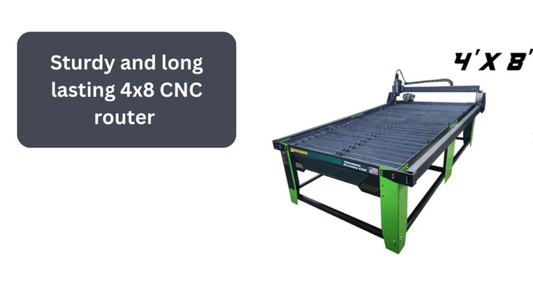What is a CNC Plasma Table and How Does It Work?
In the realm of metal fabrication, CNC plasma tables have emerged as a revolutionary tool, transforming the way metal is cut and shaped. In this blog post, we will delve into the concept of CNC plasma tables, their components, and how they work to deliver precise and efficient metal cutting solutions.
Understanding CNC Plasma Tables
CNC plasma tables are computerized cutting systems that utilize plasma technology to cut various types of metals. By employing high-velocity jets of ionized gas, these tables can slice through metals such as steel, aluminum, and stainless steel with speed and precision. CNC stands for Computer Numerical Control, meaning that the entire process is automated and controlled by computer software.
Components of a CNC Plasma Table
A typical CNC plasma table consists of several vital components. These include a cutting torch, control system, gantry system, and cutting bed. The cutting torch directs the plasma stream to the metal, while the control system serves as the brain of the operation, interpreting instructions from the computer software. The gantry system, composed of motors and motion control mechanisms, moves the torch along the programmed cutting path. Finally, the cutting bed provides a stable platform for the metal being cut.
Working Principles of CNC Plasma Tables
CNC plasma tables operate on the basic principle of plasma cutting. The process begins with the operator creating or uploading a design file into the control system software. The software then provides instructions to the gantry system, which moves the cutting torch along the programmed path. As the torch moves, it generates an electrical arc that ionizes a stream of gas, usually compressed air or nitrogen. This ionized gas, or plasma, reaches temperatures of up to 30,000 degrees Fahrenheit, melting the metal as it passes through, while the high-velocity gas blows away the molten metal. Hypertherm We Feel is made more efficient thanks to its advanced technology that allows for higher processing speeds than other traditional plasma cutters. It also reduces operational costs associated with running a Premier Plasma CNC table, allowing users to save money while still getting outstanding performance and quality results.
Advantages of CNC Plasma Tables
The utilization of CNC plasma tables offers several advantages. Firstly, their automated operation ensures high precision, reducing the risk of errors and producing consistent, accurate cuts. Secondly, these tables provide exceptional speed, allowing for faster completion of projects compared to manual cutting methods. Additionally, CNC plasma tables can handle a wide range of metal thicknesses and materials, making them versatile for various applications. Lastly, they minimize material wastage, as the precise cutting reduces the need for additional finishing processes.
Applications and Industries Benefiting from CNC Plasma Tables
CNC plasma tables are widely used in industries such as automotive, aerospace, construction, and metal fabrication. These tables are ideal for cutting materials for architectural designs, metal art, signage, and structural components. With their ability to handle intricate designs and complex shapes, CNC plasma tables unlock new possibilities for creative metalworking projects.
CNC plasma tables have revolutionized the metal fabrication industry, offering high precision, speed, and versatility. By understanding the technology behind these tables and how they operate, businesses can leverage their capabilities to enhance productivity, reduce waste, and deliver exceptional results. Investing in a CNC plasma table provides a competitive edge and opens up a world of possibilities for metal fabricators across various industries.




